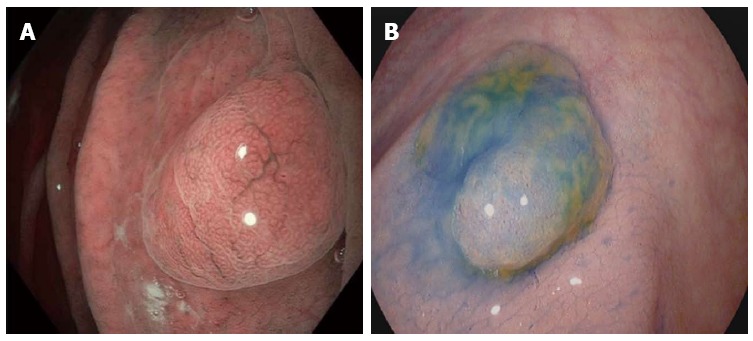Figure 1.

Dye-based chromoendoscopy and optical chromoendoscopy in the gastrointestinal tract. Left picture: Optical dye-less chromoendoscopy with narrow band imaging (NBI) is based on the utilization of optical filters within the light source of the endoscope to narrow the bandwidth of spectral transmittance, thereby enhancing and facilitating the visualization of blood vessels. As exemplified on a fundic gland polyp in the stomach, NBI allows a clear delineation of the mucosal surface pit pattern architecture. Right picture: Dye-based chromoendoscopy with indigo carmine. Indigo carmine is a blue contrast agent that is used primarily in the colon for enhancing the detection or differentiation of colorectal neoplasms. As shown for a small colon polyp here, application of indigo carmine via a spraying catheter enhances the contrast and allows to visualize the pit pattern and to delineate mucosal irregularities.
